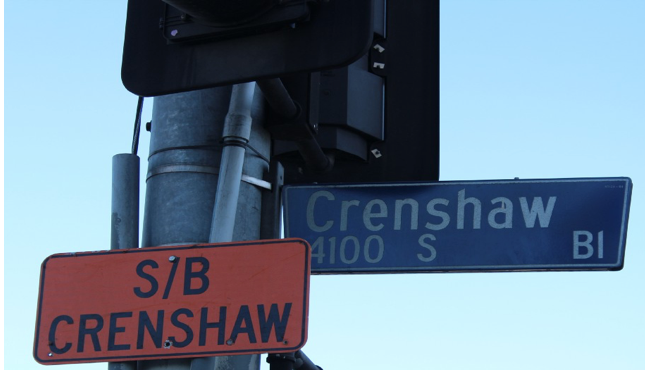CommentsFIRST PERSON-The new Crenshaw subway line extension and related mall and housing development projects have falsely been sold as a form of positive urban renewal.
In reality, they are the antithesis of any real notion of urban renewal. If implemented as proposed, it would go a long way toward decimating and scattering this vibrant Black majority,most of whom will no longer be able to afford to live in this historically African American community.
Honest urban renewal would incurthe greater expense of putting more of the Crenshaw subway line underground to have a less negative impact on this community. It would have also used community members to conceptualize and build all aspects of the project, so that people who live there would benefit from and financially share the rewards by being able to afford to live in this renewed segment of the community.
But like San Francisco's once African American Filmore District and other once vibrant innercity African American communities like it around the country, all the Crenshaw subway project will do as presently conceived is displace and exclude those who presently live in the community, because they will no longer be able to afford living there.
Two key pieces of legislation being used by the real estate lobby -- the biggest contributor to the Democratic Party and those behind this and other projects running roughshod over existing communities – are the Costa-Hawkins Act, which precludes rent control for any housing built after 1978 and Senate Bill 827, which removes all parking requirements for the market-rate high-rise dwellings being pushed by those behind the Crenshaw subway projects.
The only real strength the African American community has for stopping these real estate speculators’ exclusive profit-driven agenda is in their numbers. By using an Historical Preservation Overlay Zone (HPOZ), existing Crenshaw community members can legally restrict development of their community with elements of the HPOZ that prohibit changing the residential areas immediately surrounding the proposed Crenshaw subway developments. By eliminating high density, high-rise residences, the density of population needed to make viable the proposed mall and other projects would no longer exist, and this couldblock the presently profit-driven real estate juggernaut.
(Leonard Isenberg is a Los Angeles, observer and a contributor to CityWatch. He was a second- generation teacher at LAUSD and blogs at perdaily.com. Leonard can be reached at [email protected].) Edited for CityWatch by Linda Abrams.














